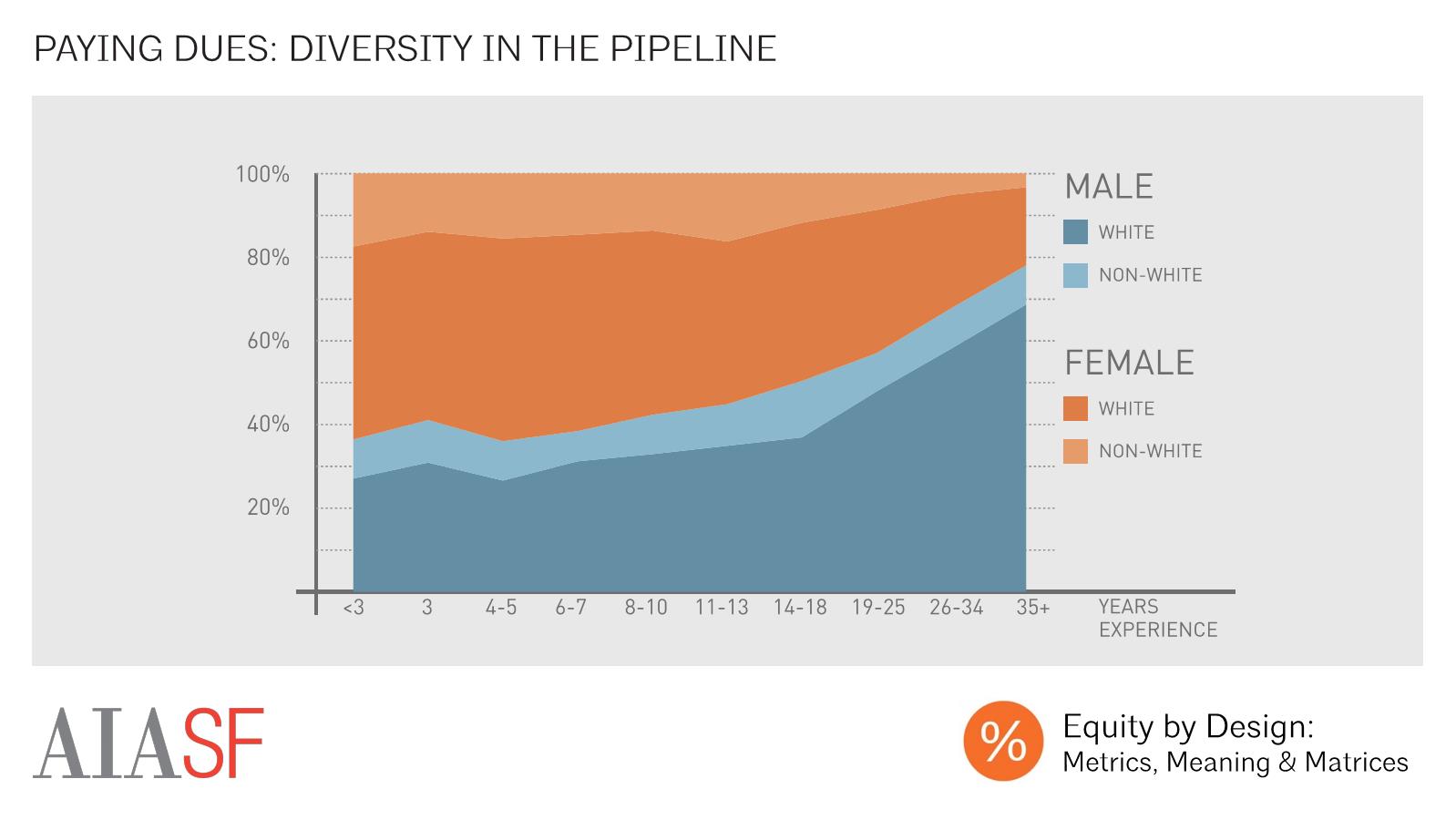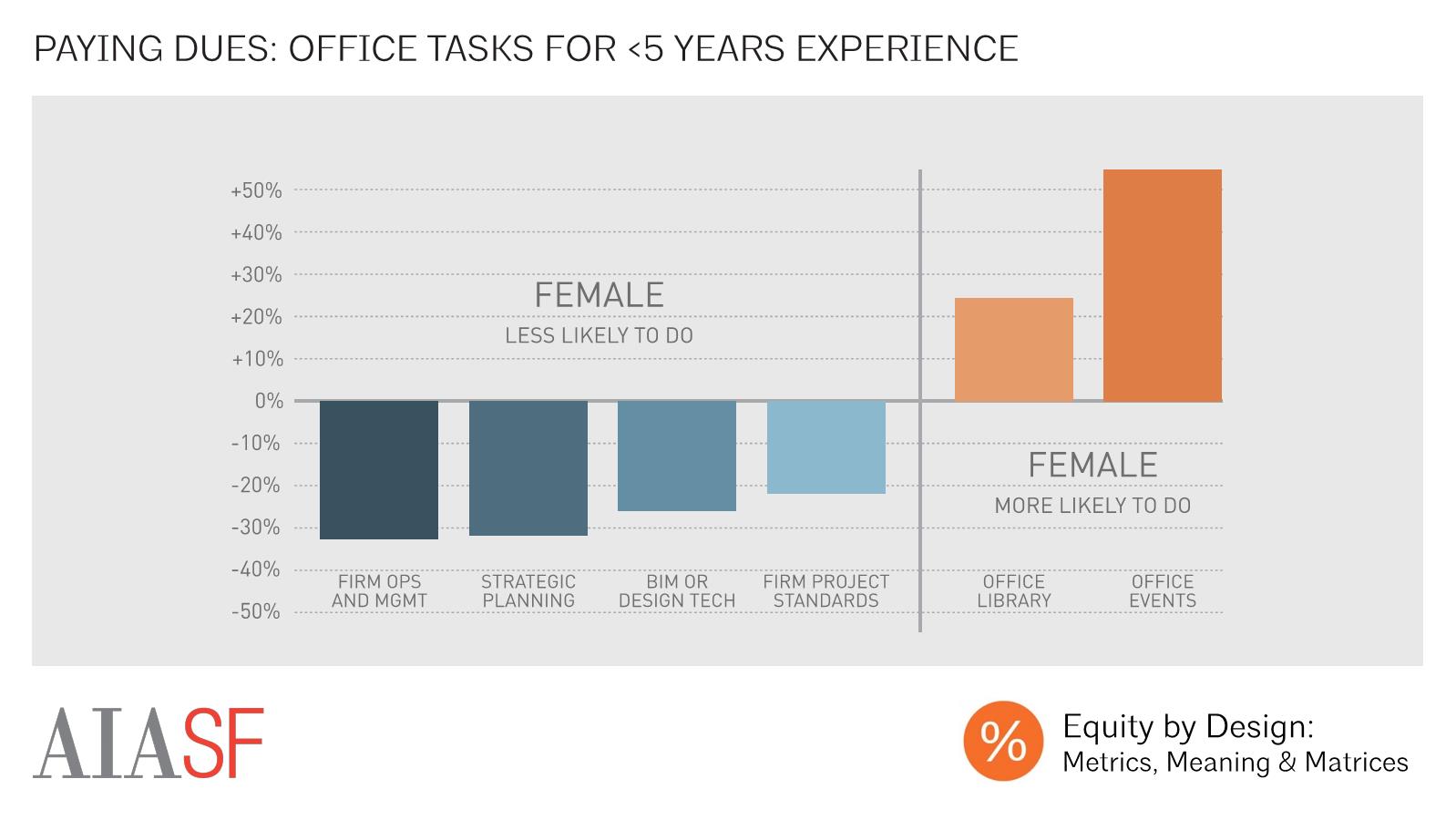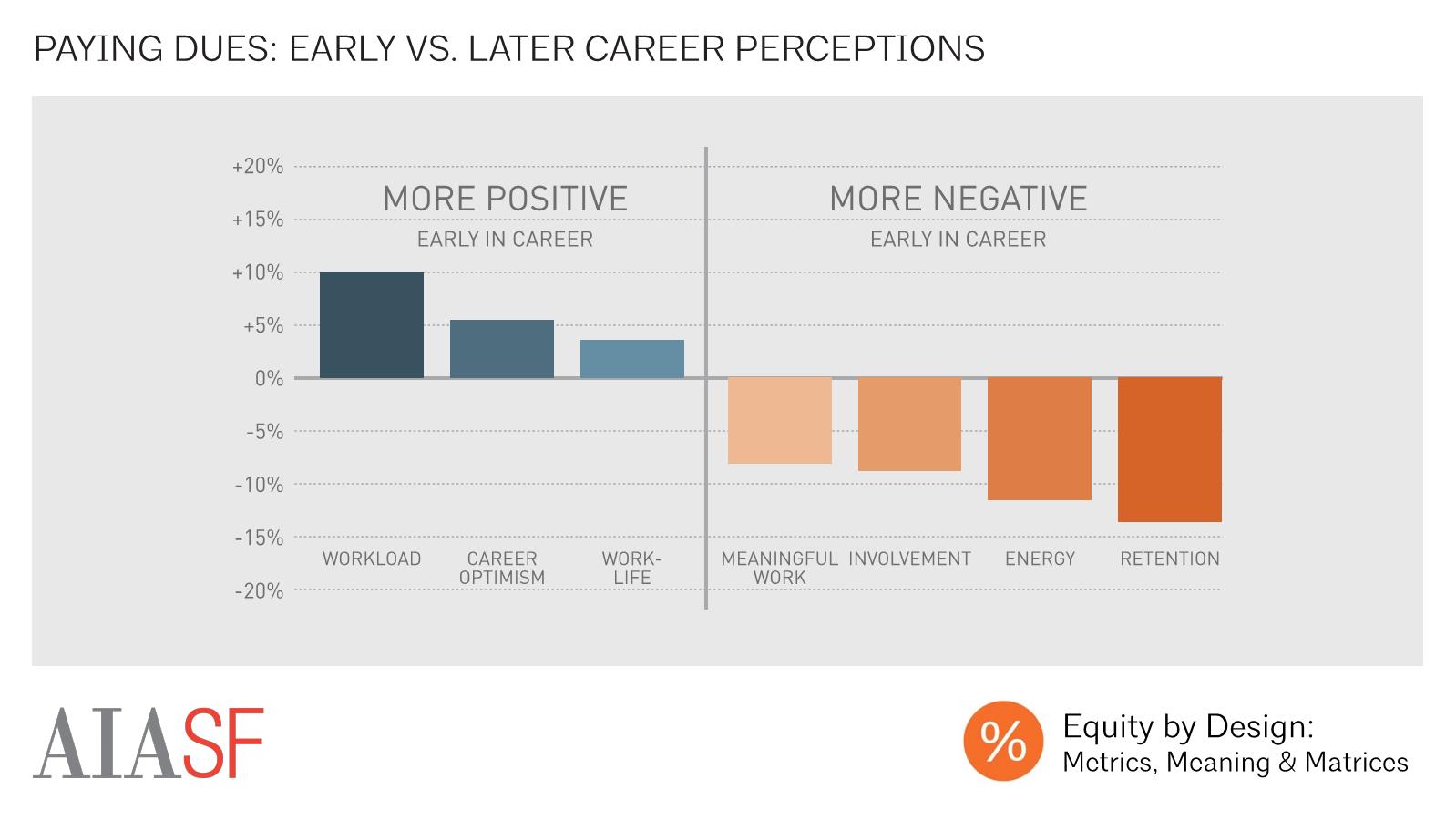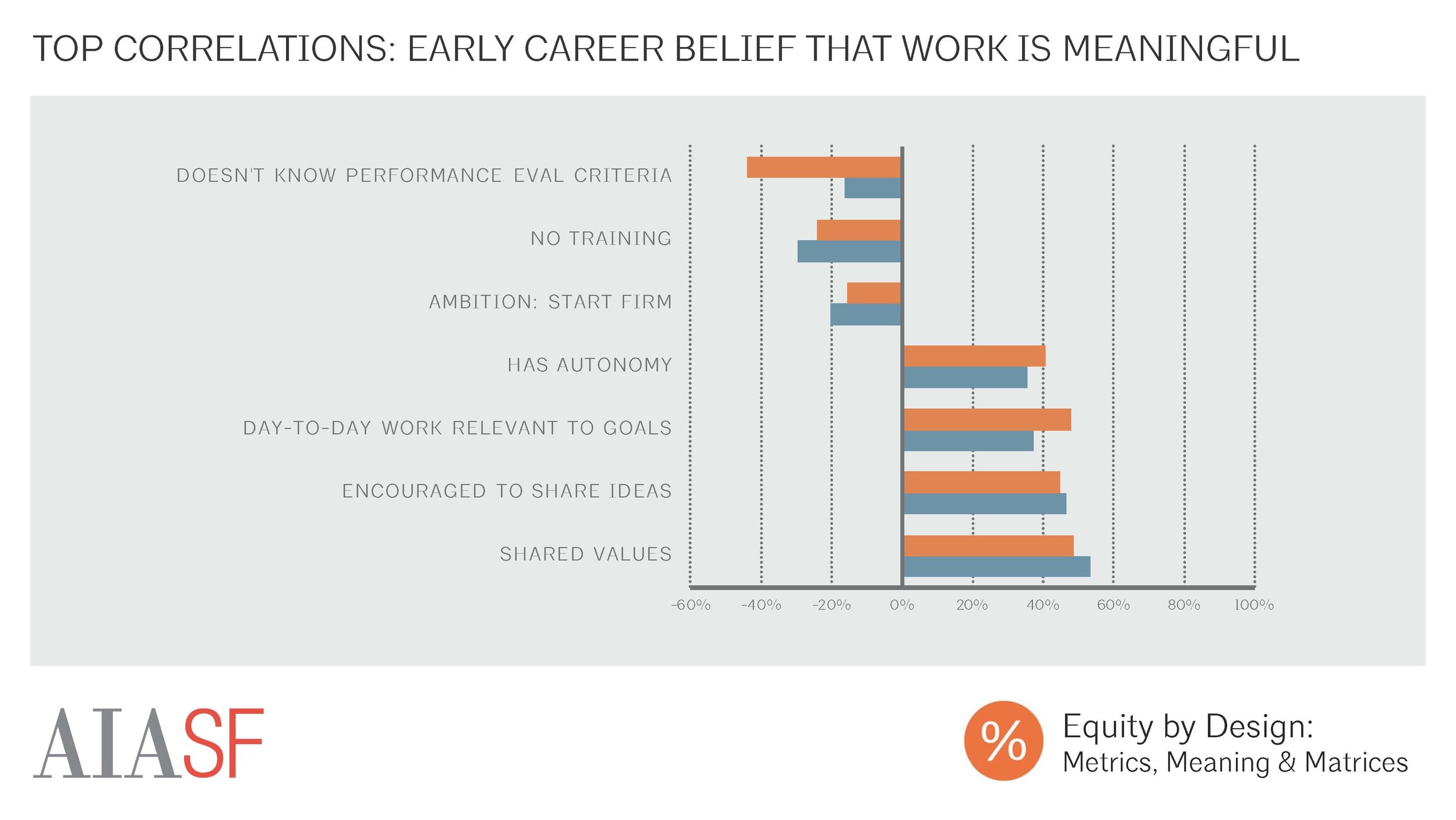By Annelise Pitts, AIA, Equity by Design Research Chair
According to our respondents, the first few years in a career in architecture can present serious challenges. About half of those in our pool who had left careers in firms for work in other fields said that they had done so during the five years of their careers. Those who were still working through this period tended to perceive their careers differently than more seasoned professionals, with heightened probability of burnout and increased likelihood of planning to quit their current jobs. These retention issues should be of serious concern to those working to increase diversity within the profession, as the industry’s least experienced professionals are the most diverse pool of architecture school graduates in the field’s history. Ensuring that this pool of graduates can find satisfying, supportive working environments where they are able to build their careers is of great importance to the project of promoting equity and ensuring that the profession represents the diversity of our communities. Please use the arrows to click through the slideshows below to learn more.
Overview
Within our sample, we saw a the greatest level of diversity amongst those with less than five years of experience, with decreasing racial, ethnic, and gender diversity in the field at each subsequent experience level. This phenomenon is explained, in part, because today’s graduating architecture classes are more diverse than they were previously, but it’s also possible that women and people of color are more likely to exit the field than white men are. In order to create and maintain a talent pipeline that reflects the diversity of our communities, employers and individuals alike should consider addressing several key challenges often faced by practitioners within the first five years of their careers in architecture.
Even within the first several years of one’s career, there were clear gendered divisions in the office management tasks that respondents took on, with female respondents with less than 5 years experience more likely than their male counterparts to take on planning office events and managing the office library and less likely to take on more strategic tasks like firm project standards, strategic planning, or firm operations and management.
While we were interested in the ways that roles and responsibilities were allocated within the population of early career professionals, we were also interested in the ways in which their experiences compared with those who had more experience. We found that, on the one hand, those early in their careers had more positive perceptions of workload and work life and were more optimistic about their futures. However, those early in their careers also tended to be less likely to find their work meaningful and rewarding, feel less involved in, or energized by, their work, and finally, much less likely to plan to stay at their current job for the next year.
There were especially marked differences in the likelihood of burnout, with roughly one in three female respondents with five or less years of experience reporting signs of burnout. This is roughly twice the rate of burnout exhibited by more senior male respondents.
Given this group’s heightened likelihood of attrition, we were interested to see that certain firm-led behaviors, like firm leaders providing one-on-one coaching and feedback and including personal and professional growth as a criteria for performance evaluation, we associated with a higher likelihood of planning to stay at one’s job during the first 5 years of an architectural career.
Work Setting
We also observed differences in where respondents reported working on the basis of experience level, with those starting their careers more likely than those with more experience to work in firm with 249 or fewer employees, and much more likely to work in firms with 50 or fewer employees.
The differences in career perceptions between those beginning their careers and more seasoned professionals was most pronounced in the smallest firms. Compared with more experienced professionals working in firms with fewer than 20 employees, early career professionals were much less likely to plan to stay at their current job for the next year, less likely to report being energized by their work, and less likely to report being satisfied by their work.
Those beginning their careers also reported different motivations for taking their current positions, with nearly 60% of respondents with five years of less of experience in the field reporting that they had taken their current job because of “opportunities for learning or professional development.”
Workplace Relationships & Culture
While junior employees were more likely to take jobs due to learning and professional development opportunities, they were less likely than more senior employees to receive career guidance or advice from a principal or partner within their firm, but more likely to rely on their managers, and their friends and family.
Those early in their careers were more likely, on the other hand, to report that someone within their firm acted as their sponsor or champion, actively advocating for their professional growth and advancement. Roughly 59% of those early in their careers reported having a sponsor, compared with 49% of those later in their careers. Senior firm leaders were the most frequently-cited sponsors.
Those with five or less years of experience exhibited slightly different social patterns than their more experienced counterparts, with those beginning their careers more likely to report eating lunch with co-workers, and socializing outside of work. Meanwhile, however, those with more experience were more likely to report that they had close friendships at work.
There were also differences in the ways in which the most junior practitioners preferred that their employers support firm culture. While social events were the top-rated workplace culture initiative according to junior and more experienced employees alike, those with more than five years of experience were much more likely than their more junior counterparts to believe that sharing company goals and achievements, inviting employees to participate in strategic decision making, holding all-team meetings, and recognizing professional achievements were beneficial to firm culture.
This mix of professional growth and strong relationships was strongly correlated with whether or not respondents at the beginning of their careers believed that their work was meaningful and rewarding, with those who didn’t know their firm’s performance evaluation criteria, or who didn’t receive training for new roles, less likely to find their work meaningful and rewarding. Meanwhile, those who shared their firm’s values, were encouraged to share ideas at work, believed that their day to day work was relevant to their long-term goals, and had sufficient autonomy to make the decisions needed to complete their work were most likely to find their work meaningful and rewarding.













